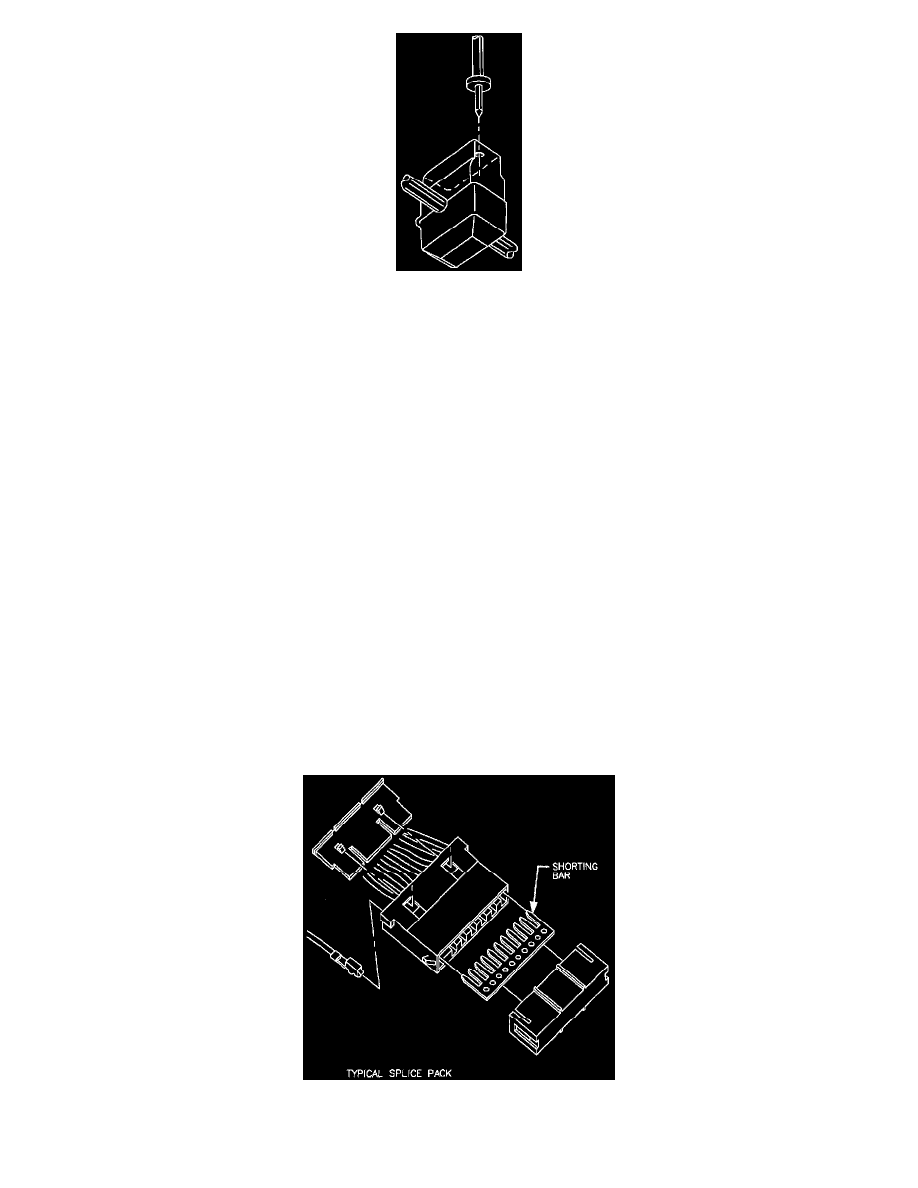SW1 L4-1.9L SOHC VIN 8 (1996)

3. Close the cover completely by pressing the cable into the diagnostic service probe terminal with pliers until the cover locks shut. A snap should be
felt or heard when the cover locks.
4. To probe the wire, insert the multimeter probe into the housing through the gel to contact the terminal. The housing has a thin wall of material to
pierce with the multimeter probe. In some locations the multimeter probe should be used to pierce the probe opening, before the probe is installed
on the wire.
IMPORTANT: Once the probe is installed, it should not be removed. The diagnostic service probes were designed to stay on the wires
permanently. The gel material inside the probe will seal the wire and allow the wire to be probed several times.
Introduction to Diagnosis of Electrical Faults
A digital multimeter is required to quickly and accurately diagnose most electrical faults. Due to the complexity of the circuitry and the use of electronic
components, a multimeter is required to safely test the electrical circuits on a Saturn vehicle. A test light should not be used to troubleshoot electrical
circuits on a Saturn vehicle, A test light is a low-resistance load on an electrical circuit. On most test lights used today, this low-resistance is 50 ohms.
Since electronics are designed to be used with high-resistance circuits, using a low-resistance test light can cause damage to an electronic module.
Another problem that occurs when using a test light is accuracy. During some testing procedures, you will be asked to test for a certain voltage. For
example, from 8 - 16 volts. With a test light it is impossible to determine the difference between 5 volts and 8.0 volts. A digital voltmeter will display
the exact voltage on a circuit.
Another problem with test lights are the sharp probe tip that is often used to probe wires. Probing a wire with a test light, or any other sharp pointed
instrument, can break strands of the wires and cause future circuit failures. Also, a break in the insulation allows the wire core to act as a wick pulling in
moisture, not only damaging the wire, but allowing it to enter connectors and components. This moisture can include salt, antifreeze and other fluids as
well as water. Some of these contaminants cause corrosion in the wire or connector. Corrosion increases a circuits resistance, and in electronic circuits,
even a small increase in resistance can give a false reading from a sensor to an electronic module.
NOTICE: Never probe secondary ignition wires, for any reason. Small pin holes in secondary ignition wires allow high voltage from the coil to arc from
the wire to a metal part, external to the secondary ignition circuit. This arcing can cause the engine to miss-fire, causing a driveability complaint.
Splice Pack Repair
Splice Pack Repair
Grounding splice pack repair kits are available through Saturn Service Parts. The repair kits include the splice pack with terminals attached to a short
